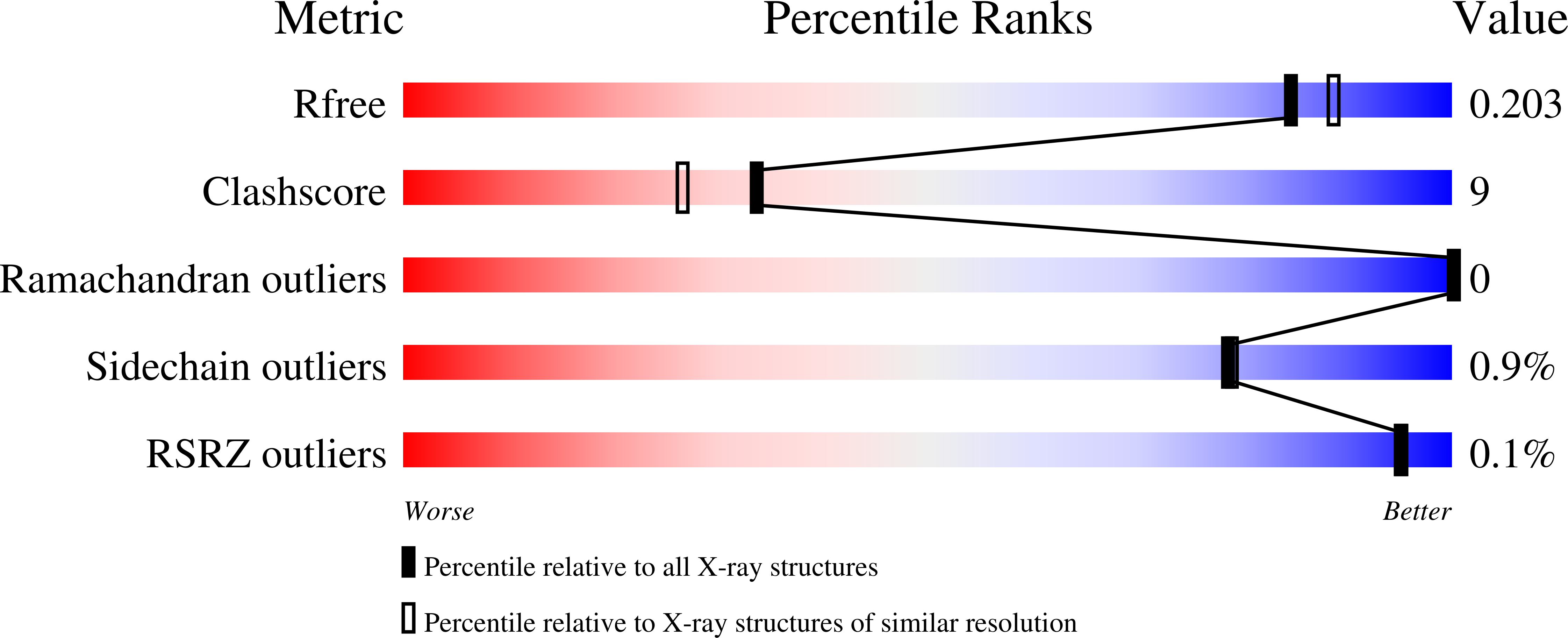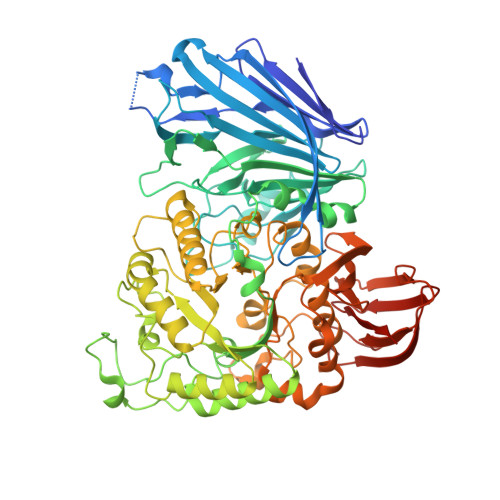Divergence of Catalytic Mechanism within a Glycosidase Family Provides Insight Into Evolution of Carbohydrate Metabolism by Human Gut Flora.
Gloster, T.M., Turkenburg, J.P., Potts, J.R., Henrissat, B., Davies, G.J.(2008) Chem Biol 15: 1058
- PubMed: 18848471
- DOI: https://doi.org/10.1016/j.chembiol.2008.09.005
- Primary Citation of Related Structures:
2JKA, 2JKE, 2JKP - PubMed Abstract:
Enzymatic cleavage of the glycosidic bond yields products in which the anomeric configuration is either retained or inverted. Each mechanism reflects the dispositions of the enzyme functional groups; a facet of which is essentially conserved in 113 glycoside hydrolase (GH) families. We show that family GH97 has diverged significantly, as it contains both inverting and retaining alpha-glycosidases. This reflects evolution of the active center; a glutamate acts as a general base in inverting members, exemplified by Bacteroides thetaiotaomicron alpha-glucosidase BtGH97a, whereas an aspartate likely acts as a nucleophile in retaining members. The structure of BtGH97a and its complexes with inhibitors, coupled to kinetic analysis of active-site variants, reveals an unusual calcium ion dependence. 1H NMR analysis shows an inversion mechanism for BtGH97a, whereas another GH97 enzyme from B. thetaiotaomicron, BtGH97b, functions as a retaining alpha-galactosidase.
Organizational Affiliation:
York Structural Biology Laboratory, Department of Chemistry, University of York, Heslington, York, YO10 5YW, UK. gloster@ysbl.york.ac.uk
















